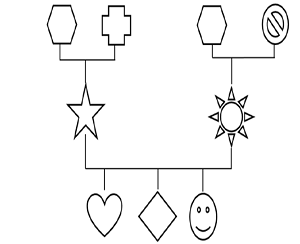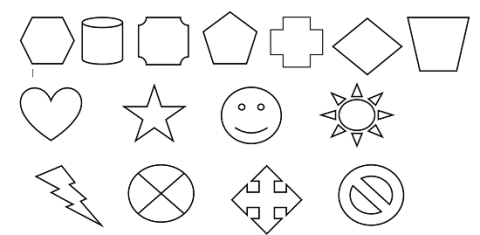
For use with: children aged 5-15 years
What is a genogram?
A genogram is a simple tool that can be used to see how a family is made up. It helps you identify who is living in the home with the child and who is in the wider family network.
It is a more formal term for a family tree.
When would you use it?
A genogram can be used when working with children and families. This tool can assist practitioners to help provide information about family members and practitioners to see patterns that maybe contributing to neglect.
Family structures can change overtime, and therefore a genogram should be updated accordingly.
How would you use it?
Children and young people may initially feel uncomfortable engaging in this type of activity. For some focusing on a task which is on paper, where eye contact doesn’t need to be maintained can feel more safe. Just remember that there is no ‘right way’ of constructing a genogram with a child.
Preparation
Preparation to commence the genogram needs to involve the child or young person. The following questions can be used to help you in this:
- Ask them how a big piece of paper they will need (A4, A3).
- Where do they want to start – with themselves, their parents etc.?
- Do they want to include pets, friends etc.?
- Ask the child / young person if they want to draw it out or do they want you to do it?
Whilst squares and circles are traditional shapes used in genograms, allow the child to use their own shapes. If the child doesn’t know what to choose, think about having a sheet of different shapes. They can either copy them, or cut them out and stick them on to paper.

Children’s Perceptions
Understanding a child’s view of themselves in the family is crucial. It’s therefore not essential if the child doesn’t ‘accurately’ outline who’s who in their family etc. It’s their perception that counts.
A useful way of doing this is by checking if there is anyone who the child would like in their genogram, or who used to be there but is no longer. Think about a special symbol for that person. Again a sheet of different pictures / symbols which the child can choose may help. This may also aid a discussion about why that particular picture was chosen.

In contrast, check if there is anyone in the child’s family that they would like to miss out. Again, think about a symbol which the child can put in the place of the missed person i.e.

Assessing Feelings / Script
From a practitioners perspective it is useful to understand the child’s emotional link to people who may have hurt them or let them down. The following ideas can help generate discussion about how a child feels about someone, who they like / don’t like, what they feel angry about and what they do want to happen.
Using different faces, ask the child which face they would put next to the people in their family e.g. happy, angry, sad, scared. Explore with the child why they chose that particular face e.g. “I can see that you put an angry face next to your mum, can you think of an example when your mum was like that with you?”
Whilst the genogram is being drawn out, have conversations about the family:
- Who would you go to if you were sad, upset?
- In your family, who is the ‘good one’, who gets into trouble the most?
- What 3 words would you use to describe your mum, dad, brother, sister etc.?
Children hold a set of beliefs about their place in the family history, the present and the future. These incorporate other ‘world views’ e.g. big boys don’t cry, I have grown to be grown up, etc.
To get a sense of these views you could suggest a hypothetical question then ask the child to think about what each person in their family might say. Using bubble thoughts can be a fun way of doing this e.g. “What do you think mum, dad etc. might say if you came home with a certificate saying you had been good at school?”

Information about the child’s family can be of interest to both the child and the parent / carer. Family secrets and things that are not talked about can be raised and explored. A child’s understanding of an event can be surprising to parents and carers.
Example Genogram

Child friendly genograms shapes (Kindly shared by the Therapeutic Social Work Team)

